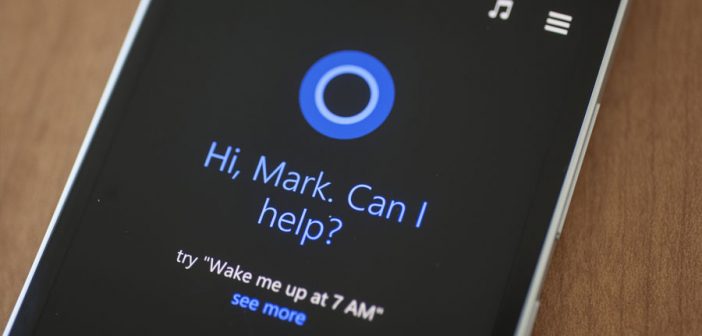With Microsoft’s focus on voice for enterprises, marketers need to understand how to adopt voice technology with customers, employees and stakeholders.
Over the past few years, one of the major stories of CES has been the rise of intelligent virtual assistants to power consumer products ranging from alarm clocks to showers. Amazon Alexa and Google Assistant have dominated the conversation about voice assistants, with Apple Siri gaining some attention, too (thanks largely to the update of Apple’s HomePod smart speaker). But Microsoft Cortana has been noticeably absent even though Microsoft got out in front of Amazon and Apple by launching Cortana two years before Alexa and four years before Google Assistant. But the voice-first world needs Cortana.
Product versus ecosystem
Microsoft probably hurt Cortana’s ability to become a de facto voice assistant from the moment Cortana was launched. That’s because Microsoft viewed Cortana mostly as a tool to support Microsoft products. Over the years, Microsoft integrated Cortana into a number of products such as Windows 10, Xbox One, Skype and Edge, the browser bundled with Windows 10. To support voice-based search, Microsoft hardwired Cortana to use Microsoft’s own search engine, Bing.
All these integrations have been well and good for users of Microsoft products. But the “Microsoft first” approach has stranded Microsoft on an island of its own making. Meanwhile, Amazon and Google have focused on a strategy of creating voice ecosystems powered by their own assistants. That strategy includes:
- Launching their own smart speakers (Google Home and Amazon Echo) to enable people to incorporate voice into their lives to do everything from check the weather to listen to music. Creating smart speakers has given Google and Amazon a strong foothold. According to an NPR/Edison research survey, smart speakers have seen a 78-percent year-over-year growth in the United States, with 53 million American adults owning at least one. Smart speaker ownership is also a crucial factor in a consumer’s adoption of other devices, according to a new Accenture report: “Ninety-three percent of consumers globally expect their home device purchases, such as smart TVs or computers, to be based on ease of integration with their standalone smart speaker.”
- Creating relationships with manufacturers of products to embed their voice assistants. As CES has demonstrated year after year, Google and Amazon have become the partners of choice for businesses integrating voice assistants. You can get a sense of just how many products are incorporating voice by reviewing overviews about products launched at CES 2019 with Google Assistant and Amazon Alexa. These inroads with manufacturers are important because they extend true ecosystems for Google Assistant and Alexa.
Apple has been following a similar strategy but with less success. That said, Apple is a viable challenger to the dominance of Amazon and Google especially as the Apple HomePod smart speaker starts to gain traction and as more automotive manufacturers adopt Apple’s CarPlay for in-vehicle infotainment and navigation (although Apple faces competition from Google and Amazon here, too).
A future for Cortana?
Meanwhile, Microsoft is not even a challenger in this voice-first ecosystem, prompting at least one writer to ask, “Why doesn’t Microsoft just give up on Cortana?”
But Microsoft does have a future with voice – in the enterprise. In September 2018, Microsoft launched a platform to help enterprises create skills for Cortana. Microsoft envisions Cortana skills kit for enterprise to make it possible for businesses to develop voice-based skills to manage tasks such as managing calendars and meetings. Microsoft demonstrated a proof-of-concept help desk skill through which an employee uses Cortana to file a help desk ticket for a malfunctioning computer. A natural language verbal request to Cortana helps the employee move from problem to solution without needing to file a help desk ticket (which, of course, is hard to do with a malfunctioning computer in the first place).
Microsoft faces competition in the enterprise, too, from – you guessed it – Amazon, Google and Apple. Amazon launched Alexa for business in 2017 to help enterprises accomplished just the sort of tasks Microsoft wants them to do with Cortana Skills Kit for Enterprise. In September 2018, Apple and Salesforce announced a relationship to enable Salesforce tools with Apple, including Siri. To a lesser extent, Google positions Google Assistant as an enterprise tool.
But Microsoft has, arguably, more cachet among enterprises. The enterprise is where Microsoft earned its stripes. Last year, Microsoft watcher Windows Latest, citing third-party data, announcedthat Cortana has the largest market share of voice assistants in businesses – and that was before the launch of Cortana skills kit for enterprise.
“Of those companies which are using at least one AI-powered chatbot service, 49 percent uses Microsoft’s Cortana and 47 percent uses Apple’s Siri while popular Assistants from Google and Amazon are far behind and doesn’t look to be coming neck to neck with the leaders in the recent times,” wrote Windows Latest.
In the voice-first world, Microsoft may never catch Amazon, Google and Apple on the consumer side. But with enterprises, Microsoft has a chance to be a leader. Now is the time for enterprises to understand how to adopt voice technology in everything they do – with their customers, employees and all stakeholders. Understanding how to partner with the firms defining the shape of voice is essential to your future success, too.
–
This article first appeared in www.martechtoday.com
Seeking to build and grow your brand using the force of consumer insight, strategic foresight, creative disruption and technology prowess? Talk to us at +9714 3867728 or mail: info@groupisd.com or visit www.groupisd.com




